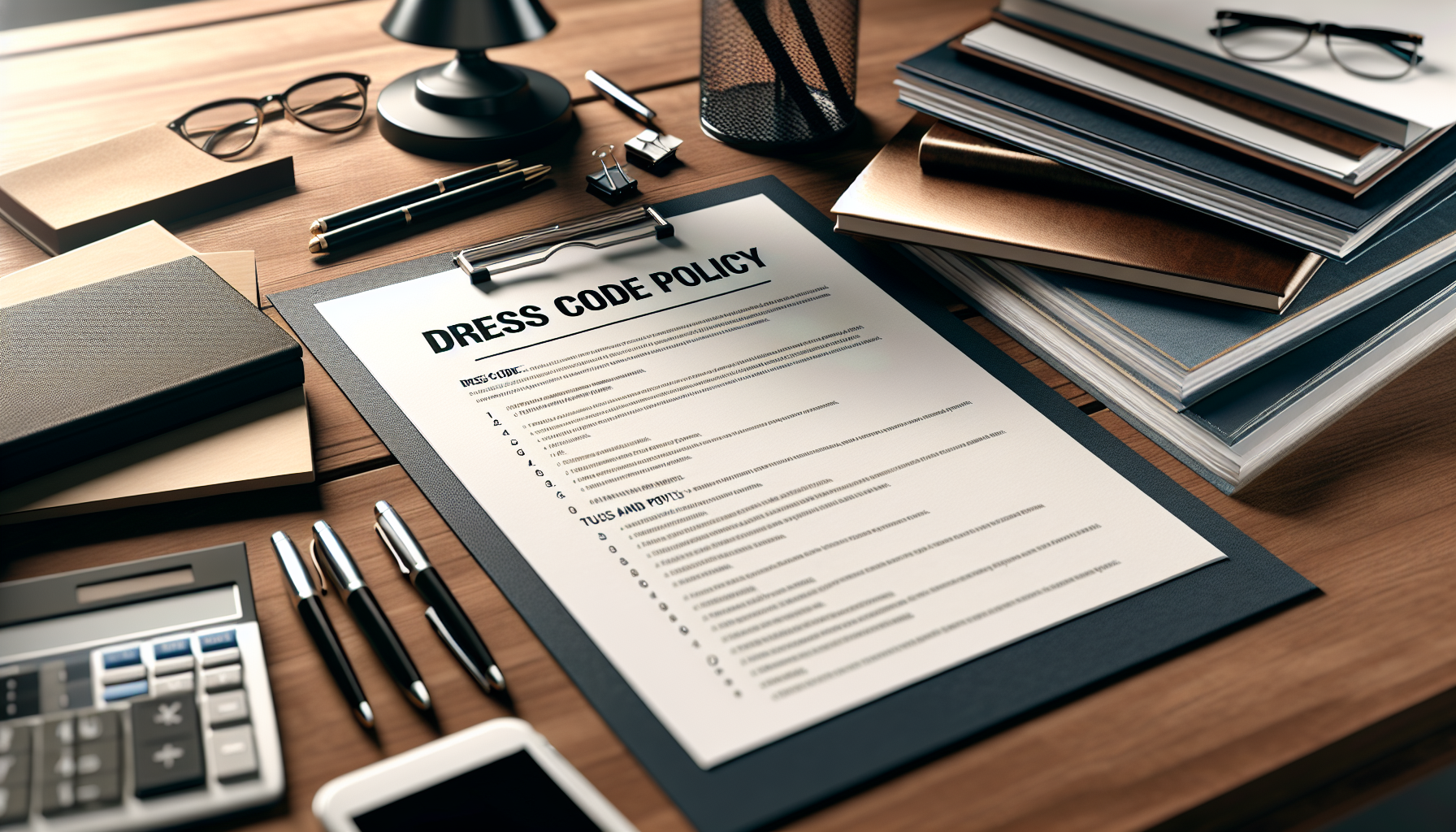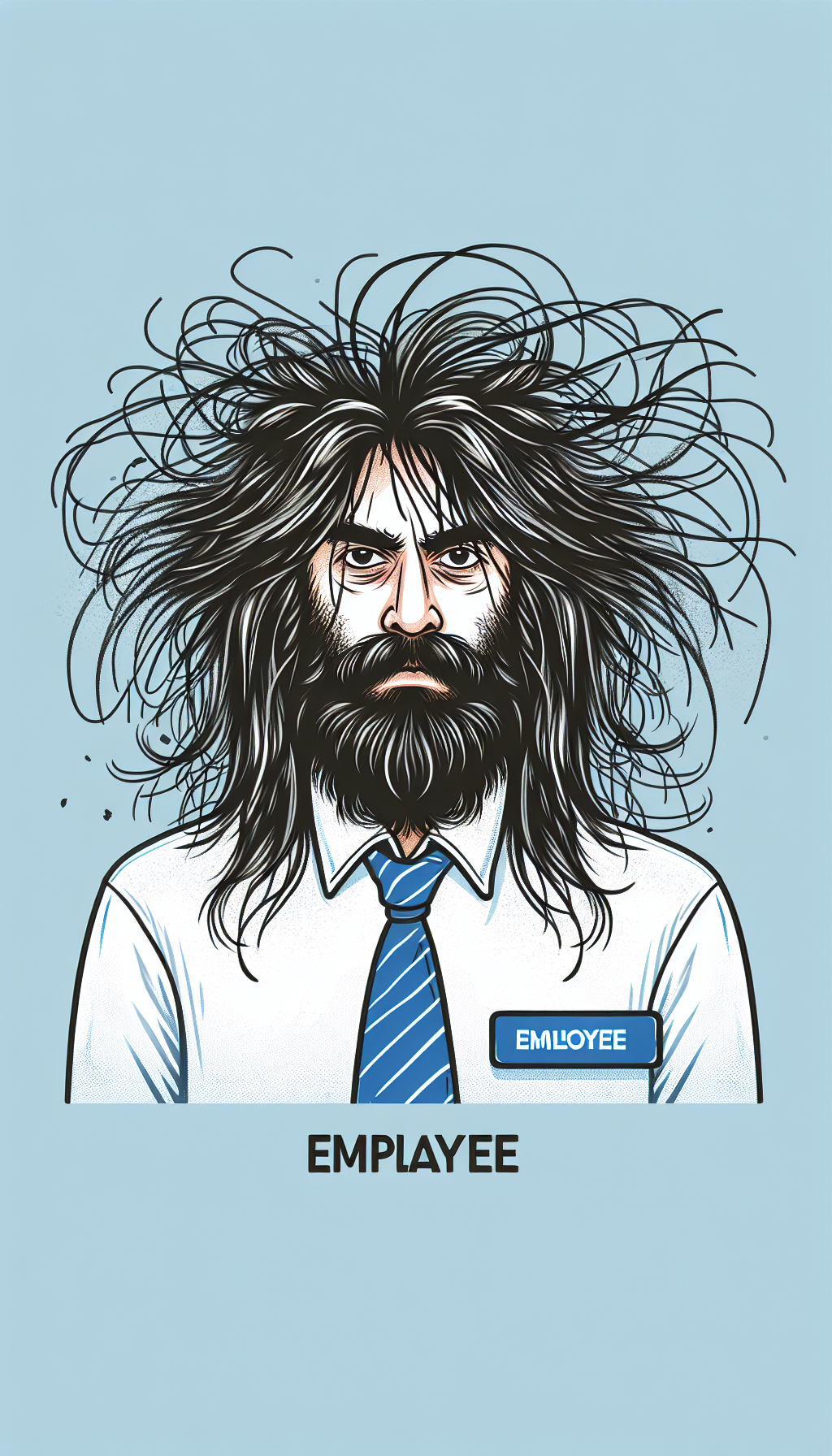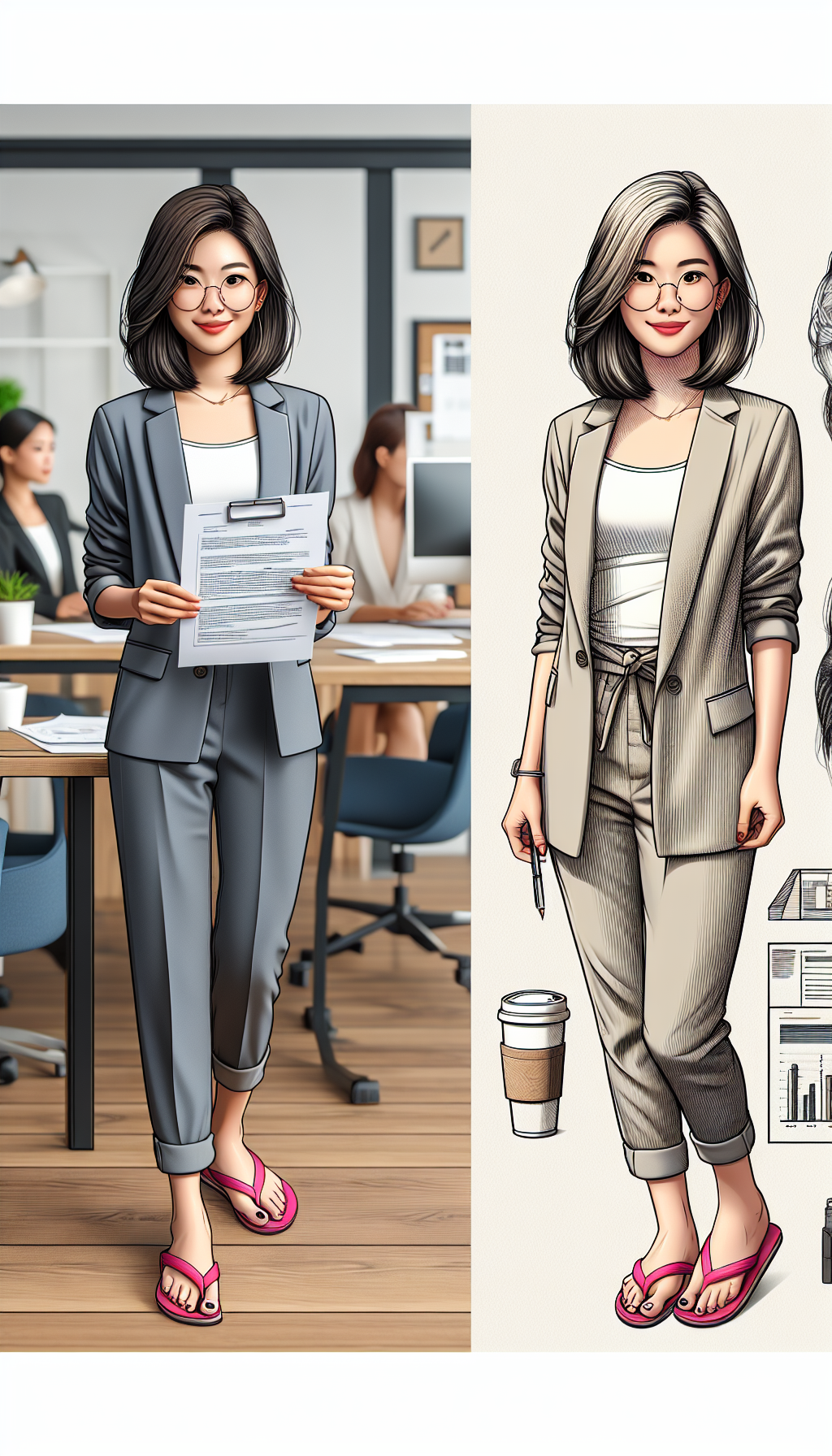Company Dress Code Policy Examples: Crafting the Right
Dress Code for Your Business - Examples Below

In today's competitive business landscape, small businesses must navigate myriad challenges to establish a distinctive brand identity and foster a professional work environment. One often overlooked yet crucial aspect of this endeavor is the creation of a well-defined company dress code policy. This article will explore why establishing company dress code policy examples is vital for small business owners and provide actionable templates to guide the process.
A thoughtfully crafted dress code policy sets the tone for the business's professional environment and reinforces the company's culture. For small business owners and managers, especially those new to managing employees, it helps maintain order and clarity, ensuring everyone understands the expectations.
The primary purpose of a company dress code policy is to convey a sense of professionalism and uniformity. This is critical for leaving positive impressions on clients and stakeholders. By having established guidelines, businesses can ensure employees present themselves in a manner that aligns with the company's values and objectives.
Creating Company Dress Code Policy Examples is Not Merely an Item on a Checklist But an Investment Worth Making

Creating company dress code policy examples is not merely an item on a checklist but an investment worth making. It enhances the company's image and morale by fostering a sense of belonging among employees who represent the brand both within and outside the workplace.
From a human resources perspective, a well-crafted dress code policy within your policy and procedure manual can mitigate misunderstandings and conflicts. It provides a clear framework that outlines acceptable and unacceptable attire, reducing subjective interpretations and potential disagreements among staff.
Moreover, a dress code policy supports legal compliance. In some jurisdictions, failing to provide clear guidelines can lead to discrimination claims. Therefore, having company dress code policy examples can shield businesses from unnecessary legal battles.
Now, let's delve into specific examples of dress code policies that small businesses can adopt or adapt. Here are three approaches: business professional, business casual, and smart casual.
A business professional dress code is typically found in more traditional industries. It requires formal attire, such as suits and ties for men and blazer or tailored dresses for women. This policy ensures employees are dressed appropriately for high-stakes meetings and client interactions.
Business casual, meanwhile, offers more flexibility. This might include trousers or skirts paired with collared shirts or blouses. Jeans may be permitted but usually in a darker color. Footwear may still lean towards the formal, such as loafers or flats.
Smart casual is perhaps the most adaptive and can cater to dynamic and creative industries. It allows for comfort and personal expression while maintaining a neat appearance. Options can include dress shirts with jeans, stylish blouses, or trendy footwear.
The Company Dress Code Policy Should Start with a Purpose Statement

Once a style is chosen, it's essential to create a comprehensive company dress code policy template. This template should start with a clear introduction outlining the purpose of the policy and its alignment with the company culture.
Specific guidelines should follow, categorizing acceptable and unacceptable attire. For instance, under "Acceptable," detail the appropriate types of clothing, colors, and styles. Meanwhile, "Unacceptable" can list items like distressed jeans, flip flops, or loud graphic tees.
Including a section on grooming standards in your policy and procedure manual is crucial as well. This can cover expectations for hair, accessories, and even fragrance use. Clear guidelines help employees understand the importance of presenting themselves well.
Consistent enforcement of the dress code policy is imperative. Outline the steps for addressing violations and the consequences for repeated non-compliance. This establishment of accountability ensures the policy is taken seriously by all.
Additionally, providing company dress code policy samples can serve as a practical guide for new employees. These samples illustrate how the policy is applied in real-world settings, helping to acclimate them more rapidly.
It's important to periodically review and update the dress code policy to remain relevant. As trends evolve and industries shift, so too should dress code expectations to reflect modern aesthetics and business realities.
Communication is another pillar of an effective policy. Engage employees in discussions about the dress code, inviting feedback. This dialogue can foster a sense of inclusivity and adaptability.
Offering training sessions about the dress code and its importance can reinforce understanding and adherence. Workshops or seminars provide opportunities to address questions and emphasize the brand's values.
In establishing company dress code policy examples, small businesses not only promote a cohesive image but also prepare their workforce for success. When employees dress appropriately, they feel more confident and perform better.
A dress code policy template is a valuable managers tool that supports overall well-being and productivity in the workplace. It proactively addresses potential issues and streamlines the onboarding process for new hires.
Ultimately, the integration of a dress code policy is a strategic move that contributes to the long-term stability and growth of a company. It's a fundamental component that underscores professionalism, unity, and respectability.
As small business owners and managers contemplate the implementation of their own dress code policies, these company dress code policy examples and templates serve as a robust guide. Properly executed, this investment of time and resources promises substantial returns, fortifying the enterprise's position in the market while enhancing its internal culture.
Sample Company
Dress Code Policy #1
Maintaining
Professionalism: A Detailed Guide to Our Company Dress Code
A professional appearance reflects positively on our company and contributes to a productive and respectful work environment. This dress code policy outlines the standards expected of all employees, ensuring we present a consistent and professional image to clients, partners, and the public. Adherence to this policy is a condition of employment.
General Principles:
Employees are expected to dress in a manner that is clean, neat, and appropriate for the workplace. Clothing should be well-maintained, free from tears, stains, and excessive wrinkling. Personal hygiene is paramount, and employees should maintain a professional level of grooming.
Specific Guidelines:
Business Professional (Client-Facing Roles): Employees in client-facing roles are expected to adhere to a business professional dress code. This typically includes:
Suits: Matching suit jackets and pants/skirts in conservative colors such as navy, black, gray, or brown.
Shirts/Blouses: Dress shirts or blouses with collars, made of materials like cotton or silk. Neutral or lightly patterned options are acceptable.
Ties: For men, ties should be conservative and complement the suit.
Shoes: Dress shoes in leather or similar materials. Closed-toe shoes are required for women.
Accessories: Minimal and professional accessories, such as watches, simple jewelry, and briefcases.
Business Casual (Most Office Roles): For many office roles, a business casual dress code is appropriate. This allows for more flexibility while maintaining a professional image.
Pants/Skirts: Dress pants, khakis, or skirts in conservative colors. Jeans are generally discouraged, unless specifically permitted by your department head. Skirts should be knee-length or longer.
Shirts/Blouses: Collared shirts, polo shirts, sweaters, or blouses. T-shirts are generally not permitted, unless they are company-branded.
Shoes: Dress shoes, loafers, or clean sneakers. Sandals and open-toed shoes are generally discouraged.
Accessories: Professional accessories are encouraged, but should not be distracting or excessive.
Casual (Certain Departments/Days): Some departments or designated "casual Fridays" may allow for a more relaxed dress code. However, even on casual days, employees should maintain a professional appearance.
Jeans: Clean, well-maintained jeans without rips or tears may be permitted.
T-shirts: Company-branded or plain, solid-colored t-shirts may be allowed.
Shoes: Clean sneakers or casual shoes are acceptable.
Unacceptable Attire:
The following items are generally considered inappropriate for the workplace:
Clothing with offensive or inappropriate graphics, slogans, or language.
Clothing that is excessively revealing or tight-fitting.
Athletic wear, such as gym shorts or sweatpants (unless specifically required for the job).
Beachwear, such as swimsuits or flip-flops.
Hats or head coverings (unless for religious or medical reasons).
Ripped or excessively distressed clothing.
Exemptions and Considerations:
Employees requiring specific accommodations due to religious beliefs, medical conditions, or other protected characteristics should contact Human Resources to discuss potential exemptions to this policy.
Enforcement:
Supervisors are responsible for ensuring that their team members adhere to this dress code. Employees who violate this policy may be asked to change their attire or may face disciplinary action, up to and including termination of employment.
This dress code policy is intended to provide clear guidelines for maintaining a professional appearance. We encourage employees to contact their supervisors or Human Resources with any questions or concerns regarding this policy. We believe that a consistent and professional image contributes to a positive and productive work environment for everyone.
Sample Company Dress Code Policy #2
I. Purpose:
The purpose of this policy is to establish guidelines for professional attire and appearance, ensuring a consistent and positive image for [Company Name]. This policy aims to foster a respectful and productive work environment while allowing employees to express their individual style within acceptable boundaries.
II. General Guidelines:
Cleanliness and Neatness: All clothing must be clean, wrinkle-free, and in good repair.
Professionalism: Attire should be appropriate for a business setting and reflect favorably on the company.
Safety and Functionality: Clothing should not impede job performance or pose a safety hazard.
Respect and Inclusivity: The dress code should be applied fairly and without discrimination, respecting diverse cultural backgrounds and religious beliefs. Reasonable accommodations will be considered.
III. Specific Requirements:
This section will outline specific acceptable and unacceptable items. Examples include:
Acceptable Attire (Business Professional/Business Casual - Specify):
Suits, dress pants, skirts, blouses, button-down shirts, sweaters, professional dresses, dress shoes, and closed-toe shoes.
For business casual, khakis, collared shirts, and casual shoes may be permitted.
Unacceptable Attire:
T-shirts with offensive graphics or slogans, ripped jeans, athletic wear (unless required for the job), excessively revealing clothing (e.g., low-cut tops, mini-skirts), flip-flops, and hats/caps indoors (unless for religious or medical reasons).
IV. Hygiene and Grooming:
Personal hygiene is essential. Employees are expected to maintain a clean and well-groomed appearance.
Strong perfumes or colognes should be used sparingly.
Hair should be clean and neatly styled.
V. Jewelry and Accessories:
Jewelry should be professional and not distracting.
Visible tattoos and piercings should be discreet and inoffensive.
VI. Enforcement:
Supervisors are responsible for ensuring adherence to this policy.
Employees in violation of this policy will be addressed privately by their supervisor.
Repeated violations may result in disciplinary action, up to and including termination.
VII. Special Circumstances:
Employees who require accommodations due to medical conditions or religious beliefs should contact Human Resources.
For special events or client visits, a specific dress code may be communicated in advance.
VIII. Policy Review:
This policy will be reviewed and updated periodically to ensure it remains relevant and effective.
Conclusion:
This dress code policy is designed to help employees understand expectations regarding professional appearance. By adhering to these guidelines, employees contribute to a positive and professional work environment, ultimately enhancing the company's image and success. It is the responsibility of each employee to read, understand, and abide by this policy. Any questions or concerns should be directed to their supervisor or the Human Resources department.